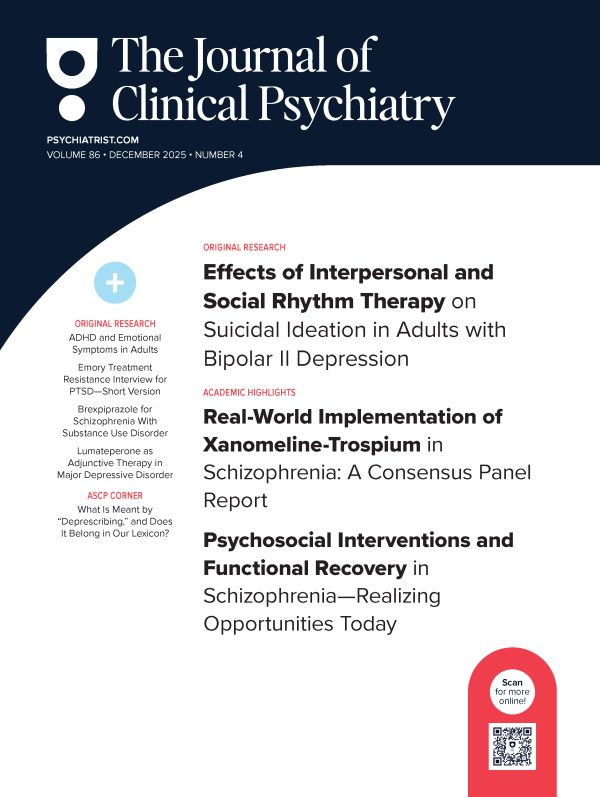Objective: Selective serotonin reuptake inhibitors (SSRIs) are frequently used as a first antidepressant for major depressive disorder but have response rates of 50% to 60% in daily practice. For patients with insufficient response to SSRIs, switching is often applied. This article aims to systematically review the evidence for switching pharmacotherapy after a first SSRI.
Data Sources: A systematic literature search (updated until Feb. 10, 2005) in MEDLINE, EMBASE, CINAHL, and PsychINFO (all indexed years) identified randomized, controlled trials (RCTs) and open studies investigating switching strategies. In the absence of specific keywords for switching, we performed “sensitive” searches using free text words with wildcards ($): “switch$” or (“alternat$” adj5 “treat$”) or (“alternat$” adj5 “therap$”) in combination with the Cochrane Collaboration search filter for RCTs, the Cochrane Collaboration Depression Anxiety and Neurosis Group search filter for major depressive disorder, and MeSH terms for antidepressants (in combination with additional text words for all antidepressive agents). Additionally, we included 4 recent Sequenced Treatment Alternatives to Relieve Depression publications. We limited searches to adults and humans but did not apply language restrictions.
Study Selection: Relevant articles were retrieved and critically appraised. The methodology of the studies, the results on efficacy and dropouts due to side effects, and remarks were summarized in an evidence table. Three studies comparing a switch to venlafaxine or SSRIs were pooled.
Data Synthesis: Eight RCTs and 23 open studies were identified, studying populations with different levels of treatment resistance. Definitions of response and remission rates varied between studies. Observed response rates after switching to any of the classes of antidepressants varied between 12% and 86%. Remission rates varied between 7% and 82%. The number of previous treatments with antidepressants was negatively correlated with treatment outcome. Rates of dropout due to side effects varied considerably across agents (5%-39%). Switching to venlafaxine showed a modest and clinically equivocal benefit over SSRIs (number needed to treat = 13 [95% CI = 9.1 to 25.0]).
Conclusions: After a first SSRI, any switch within or between classes of antidepressants appears legitimate (second SSRI, novel dual-acting antidepressants, selective norepinephrine or noradrenergic/dopaminergic agents, or tricyclic antidepressant or mianserin). No unequivocal evidence is available to prove an advantage of a between-class switch. More guidance by randomized empirical studies is needed. Clinical implications and methodological considerations for future studies are discussed.
Please sign in or purchase this PDF for $40.00.





